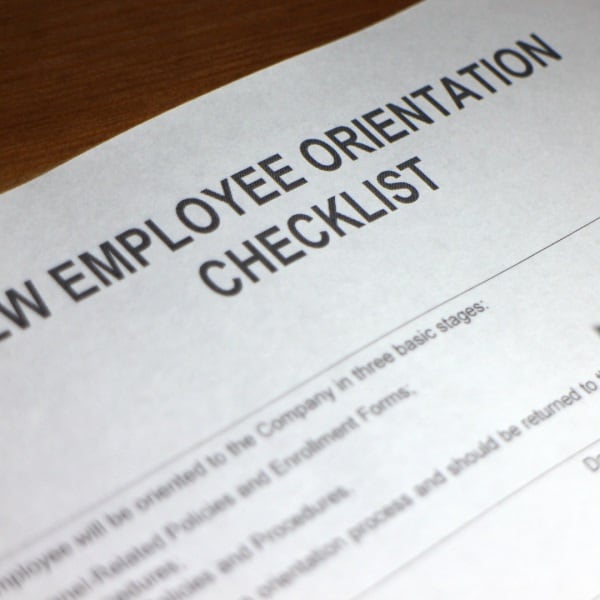As the workforce evolves and becomes more competitive, it's essential for businesses to provide their employees with opportunities to learn and develop new skills. A training and development plan can help employees stay engaged, increase productivity, and improve job satisfaction. A company is only as good as it is if the employees are properly trained. Effective employee training programs have many benefits, from reduced turnovers to increased sales and profits.
Numerous training programs are available for employees, but what is more important is choosing the type that suits your employees best. In this article, we'll explore the 12 best employee training programs and how to create your own.
In this article
Part 1. What is an Employee Training Program?
An employee training or staff development program is a systematic approach to improving your employees' skills, knowledge, and abilities. It involves identifying specific training needs, designing new employee training plans, and evaluating their effectiveness. The basic components of a training program include identifying training goals, selecting training methods, and assessing the effectiveness of the training. The benefits of having an employee training program include the following:
- Increased employee motivation: Employee training programs can be a great way to boost employee motivation. Employees who feel that their organization invests in their career development are more likely to be engaged and motivated. This, in turn, can improve employee retention rates and reduce the costs associated with employee turnover.
- Improved job satisfaction: Employees trained in new skills and technologies are better equipped to handle their responsibilities. This can lead to a deep sense of accomplishment and fulfillment, boosting their overall job satisfaction.
- Increased productivity: One of the most significant benefits of employee training programs is increased productivity. Employees trained in new skills are better equipped to perform their jobs effectively and efficiently. As a result, they can complete tasks faster, with fewer errors, and with more confidence. This can lead to improved performance, increased revenue, and a better overall bottom line for the company.
Part 2. 12 Popular Types of Employee Training Programs [with Examples]
For an employee training program to be effective, it needs to cater to the specific needs of your employees. This is where different types of employee training programs come in, each designed to address different areas of employee development. This section will explore the 12 best employee training programs you can use in your organization, along with examples. By understanding these training programs, you can select the ones that best suit the needs of your employees and help them achieve their full potential.
1. Orientation Training.
Orientation training is a crucial part of any organization's employee development program. It is the first step in the onboarding process and sets the tone for the new employee's entire experience with the company. In addition, orientation training aims to introduce new hires to the organization's culture, values, policies, and procedures, which will help them acclimate to their new workplace more quickly and effectively.
An excellent example of an orientation program is Google's Noogler Orientation. It is designed to help new hires integrate into the company's culture and values. During the program, new employees are introduced to the company's history, mission, core values, its various departments, and the role each one plays in the organization's success. In addition, the program offers opportunities for new hires to network with their colleagues and managers and better understand their job roles and responsibilities.
You can do something similar with topics like facility tours, introduction to coworkers, review of employee handbooks and papers work, orientation outlines, and job expectation reviews.

2. Onboarding Training.
Onboarding training is another type of training plan for employees that helps new hires adjust to their roles and the company's culture. It goes beyond orientation training, as it includes more detailed information and training sessions about the job functions and responsibilities. The primary goal of onboarding training is to make the new employees productive workers as soon as possible and retain them long-term. Onboarding training can take several weeks or months, depending on the complexity of the job. Likewise, the company's training program can also affect this.
Facebook has a comprehensive 30-day onboarding program that includes various training modules. The program covers leadership development, team building, and goal setting. The onboarding program also includes one-on-one sessions with a mentor, who helps the new hires to learn about the company's culture, values, and expectations. By providing an extensive onboarding program, Facebook ensures new employees have all the necessary tools and knowledge to succeed in their roles. It also helps them feel valued and supported in the company.
Other topic examples for Onboarding training include Welcome kits, Instant goal setting, free samples, icebreaker sessions, a Buddy system, and Interactive courses.

3. Technical Training.
In today's fast-paced technological world, technical training has become essential to employee training programs. It involves teaching employees specific skills and knowledge required to perform their job functions. Technical training topic examples include training on software, hardware, or specialized equipment, Time management, Customer service training, and Team Communication Training.
Microsoft offers technical training programs to their employees to keep them up-to-date on the latest software and technologies. This training helps to increase employees' confidence and competence in their job roles, resulting in increased productivity and job satisfaction.

4. Product Training.
Product training is crucial for employees who work in companies that provide products or services. It involves teaching employees about the company's products or services, including their features, benefits, and how to use them. Some topics to include in this employee development training includes Cross-department collaboration, Case studies, Film reviews, refresher training, and scenario-based training.
For example, Apple provides product training to its retail employees on how to use their products and provides excellent customer service. This training helps employees better understand the products they are selling, leading to increased sales and customer satisfaction.

5. Online Training.
Online training has become a popular and cost-effective training program for employees. It involves using online platforms, such as webinars or e-learning modules, to deliver training content. In addition, online training offers employees the flexibility to learn at their own pace and convenience.
For example, LinkedIn Learning provides online training courses on various topics, such as project management, leadership, and marketing. This training helps employees to develop new skills and knowledge, leading to improved job performance and career growth. You can add Human Resources, Change management, and Conflict Resolution as more topics to handle.

6. Soft Skills Training.
Soft skills training is gaining popularity among top employee training programs. It involves teaching employees interpersonal topics, such as communication, teamwork, negotiation, critical thinking, and problem-solving. These skills are essential for employees to work effectively with others and improve their job performance.
Amazon provides soft skills training to its employees to help them develop better communication and collaboration skills. In addition, soft skills training can improve employees' job satisfaction and increase retention rates, resulting in a more productive and efficient workforce.

7. Compliance Training.
Compliance training is essential for employees who work in industries that are highly regulated. It involves teaching employees about legal and regulatory requirements that affect their job. For example, compliance training could include training on safety, security, nondiscrimination, hiring and termination, FMLA, and Forms (W-4, I-9).
IBM provides compliance training to its employees to ensure they comply with legal and regulatory requirements. Compliance training can help companies avoid legal issues and maintain a good reputation. It also helps employees to understand their responsibilities and obligations, leading to better decision-making and ethical conduct in the workplace.

8. Sales Training.
Sales training is crucial to a company's employee development program, especially for businesses that sell products or services. This type of training aims to improve employees' selling skills to increase revenue and profitability. The training program teaches employees how to communicate effectively with customers, understand their needs, and persuade them to purchase. Sales training topics include product knowledge, objection handling, negotiation skills, social media management, and customer service.

9. Team Training.
Team training focuses on improving the performance of employees who work together on a specific project or task. This employee training program aims to increase collaboration, communication, and productivity. Team training can involve activities or topics that promote teamwork, such as problem-solving exercises, communication exercises, customer service training, emotional intelligence training, and team-building games.
Examples of team training could involve a team-building exercise where employees work together to build a bridge from materials like straws and paper clips. The exercise would require them to communicate effectively, problem-solve, and work together to achieve a common goal.

10. Leadership Training.
Leadership training is designed for employees who hold leadership positions or have the potential to become leaders in the future. This type of training aims to develop the skills and knowledge needed to lead a team or organization effectively. Leadership training can include communication, decision-making, conflict resolution, and strategic planning.
An example of leadership training could involve a workshop on effective communication, where leaders learn to listen actively, give feedback, and motivate their team members. They could also be taught how to handle team conflict and create a strategic plan for their department or organization.

11. Quality Assurance Training.
Quality assurance training focuses on improving the quality of a company's products or services. This type of training aims to ensure that employees understand the quality standards that the company adheres to and can maintain those standards in their work. Quality assurance training can include topics such as quality control, quality assurance, QA framework, QA process improvement, and quality improvement.

12. Senior Executive Training.
Senior executive training is designed for employees who hold senior leadership positions in a company, such as CEOs or executive directors. This type of training aims to develop the skills and knowledge needed to lead a company or organization at a high level effectively. Senior executive training can include strategic planning, financial management, business leadership, accountability, and corporate governance.
For example, senior executive training could involve a workshop on strategic planning, where executives learn how to develop and implement a long-term strategic plan for their company. They could also be taught how to manage the company's finances effectively and ensure that it adheres to the best corporate governance practices.

Part 3. How to Create Your First Training Program for Employees?
Now that you understand the different types of employee training programs available, it's time to learn how to create your first new employee training program. Here are a few basic steps to get you started:
- Identify the training needs of your employees. You can do this by conducting a training needs analysis, which involves identifying the skills and knowledge gaps that need to be addressed through training.
- Set measurable training goals aligning with the organization's objectives.
- Consider adult learning characteristics. Some learners may prefer visual aids, while others may prefer hands-on activities.
- Choose appropriate training methods. You can choose from several training methods, such as classroom training, e-learning, on-the-job training, and coaching. You should choose a method that is most suitable for the type of training and the learning preferences of your employees.
- Develop training materials such as presentations, handouts, and exercises. The training materials should be engaging and interactive to keep learners interested and focused.
- Evaluate training effectiveness. You can use various methods to evaluate the training, such as surveys, assessments, and feedback forms.
Expert Tip: Use Video Training
Video training is an effective way to engage employees and make the training more interactive. It is a flexible and cost-effective method that can be used for different types of training. If you're looking for a user-friendly tool to create training videos, you can try DemoCreator, a video maker software designed for creating high-quality training videos.
DemoCreator provides a range of features that make it easy to create engaging training videos, such as screen recording, webcam recording, transitions, annotations, and animations. Here are steps to create training videos that provide your employees with an effective and engaging learning experience with DemoCreator:

- Launch Wondershare DemoCreator
- Click webcam.
- Enable the screen drawing tool at the bottom of the screen.
- Click the Spotlight button from the menu bar.
- Adjust your microphone.
- Record your screen and webcam.
- Edit from the media files section.
Final Words
Employee training programs are essential for the success of any organization. You can improve employee performance, productivity, and satisfaction by providing quality training programs. We hope this guide has provided useful insights and practical tips on creating effective employee training programs. We encourage you to try DemoCreator to create engaging training videos and take your employee training program to the next level.
